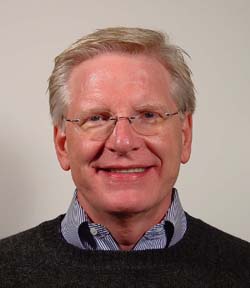Cable Guy

Gerald Krulewicz
COMPANY: Wireworks
TITLE: President
BACKGROUND: Having worked on Broadway and broadcast projects, Krulewicz understands what his customers need, having been there himself.
THE CHALLENGE: Ensuring the customer understands that while technology constantly changes, cable should not be their first worry-Wireworks will be able to handle those concerns.
SCN: What is your position, and what does it entail?
Gerald Krulewicz: I am the co-founder and president of Wireworks, and I'll have been here for 33 years next year. I am always looking at how we are fitting with the customer. Are we serving the customer the way they need to be serviced, not the way we think they should be serviced? It's all their point of view. I watch very closely how customer service and sales are handling things, what's being quoted. I often talk to customers and realize there might be a better way to do something.
How has your background influenced your current role?
I come from a theatrical background. I've been a head electrician, a sound designer, a lighting designer. I worked on Broadway, on the road, nationally and internationally, and I worked for NBC television on a couple of build projects. Back then there was no such thing as sound. It was there, but the electrician was sort of scared of it. I was an electrician for them-I used to build things for Saturday Night Live. It was very strange. You'd work on Monday, Tuesday, Wednesday, and nothing would happen-the show's on Saturday night. Then on Thursday afternoon, things would come out of the fax from Belushi and that bunch: "Build chainsaw teddy bear." But this was electric; I was in build. So I'd just have to go out and get a chainsaw, stick it in a teddy bear, make sure the fur didn't get stuck in the chainsaw. Not a very typical electric job, but how do you make this work? There were no rules. It was always about how do you get the job done, and how do you get it done exactly right over and over.
I understand what the person's talking about on the other end of the phone-I can see myself sitting there on the phone, waiting, with demands from the customers. I've been there. Most of our products are directly from customer demands. How are we going to solve this particular problem that's emerging? These guys are faced with a lot of challenges today-cable shouldn't be one of them.
What are your current goals?
We're always trying to improve the way we deal with our customers. We're re-doing our website. Rather than coming from a product point-of-view it will come from a solution point-of-view. It sounds kind of old-hat but people don't think that way a lot of times. They're faced with a problem, and they're looking at it in all these little bits, and they have to figure out how it all goes together. There's a way to tie this thing all together very easily. It's not a piece fix, it's a solution fix. That's the kind of thing that we do.
Where do you see your market heading?
We deal in a number of different arenas. The common thing among them is that technology is racing faster than ever, the customer has a really tough time keeping up with the products right now. They have so much to absorb, so much to learn, and what we're trying to do is get the cable out of their equation; to say, "hey, we can handle this for you." This is really simple. We have products, or we can customize products that can do exactly that thing for you. I know that technology is getting very complicated, and people may tend to focus on that, instead of focusing on how to get the job done. Similar to the chainsaw teddy-how do you do it? How do I get that done so they can use it? The end result is where we're going here. We want to be the problem-solver here, not the thing that's complicating their life. Get a grip-it's cable! We can do this, and we've been doing it for a long time.
Are there new initiatives we are likely to see from Wireworks?
We've been looking at audio networking products. When you get into networking appliances, you see the standards changing every day. We've never looked at cabling from that point of view. Our products are really long-lasting, so we're looking at solutions that will last for years. It's not like you drop a cabling system in and it sits there for two years and then gets thrown away like a cell phone. There are a number of hurdles to overcome to be able to bring out that sort of product. Not just the reliability, which has to be there, or the quality, which has to be there, but also it has to be able to take some abuse. It has to be able to stand up to the people who are using it. That's big when you get into the networking products. We've got at least five different protocols. It's got to settle down, so the customer can get something that he knows is not "last year's cell phone," or is not a protocol that is supported, or is not going to do what he wants.
A daily selection of the top stories for AV integrators, resellers and consultants. Sign up below.
